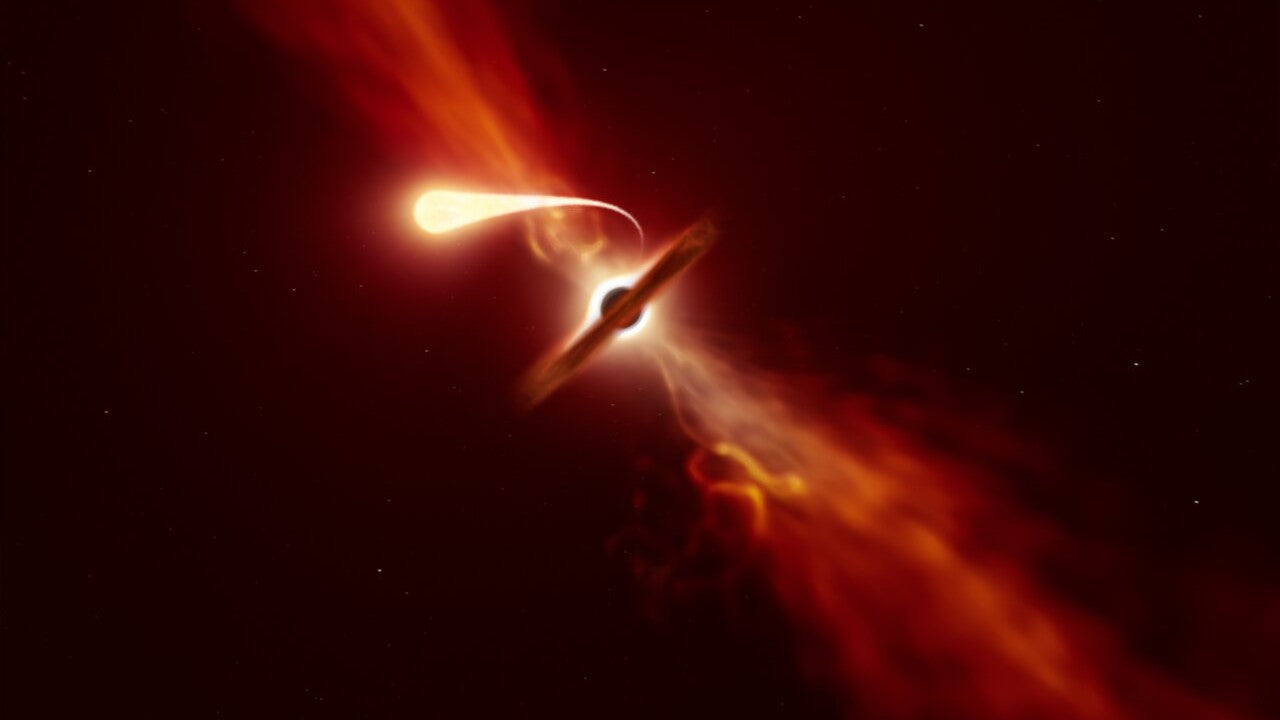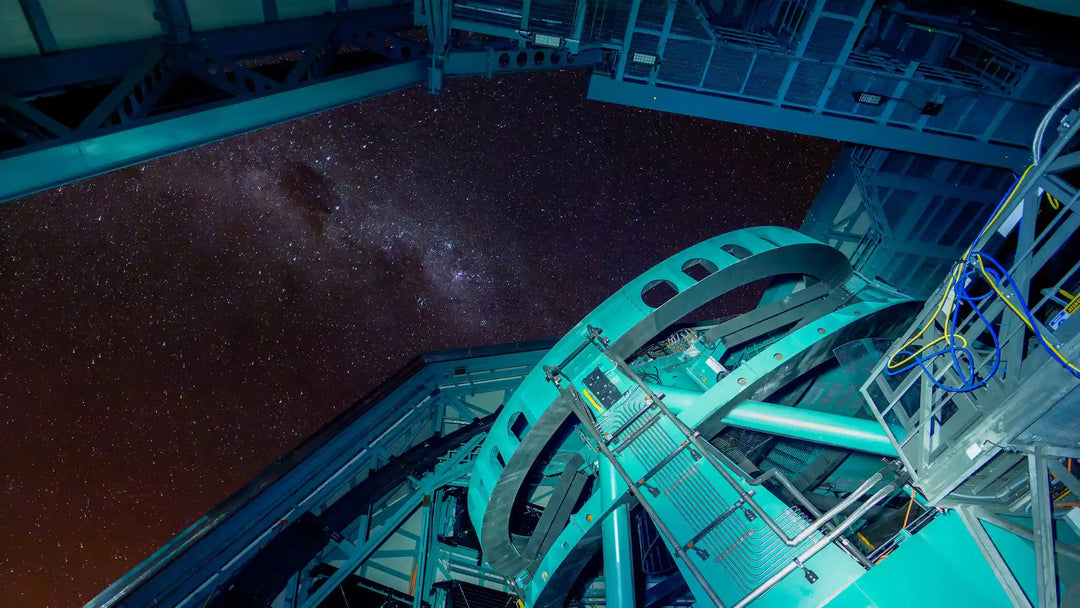AT2018fyk: the star survives a close encounter with a black hole only to meet it again

In a distant galaxy, a supermassive black hole consistently reaches the star to destroy it. And the star so far slipped away. The black hole rips away its material, but the star dares to win it back later.
What is AT2018fyk?
In 2018, a flare in a nucleus galaxy 893 million light-years away was spotted with All-Sky Automated Survey for Supernovae (ASASSN). The event was cataloged as AT2018fyk and had all the signs of a tidal disruption event (TDE).
Check also:
- The Earthrise Photo: A Journey Through Earth’s Iconic Space Portrait
- William Bill Anders Tribute: Astronaut, Earthrise Photographer, Aviator
- Nili Fossae: Explore the Legendary Scars of Mars
- Stunning history behind the Black Hole image
- NASA’s Webb Maps Weather on WASP-43 b
- JADES-GS-z14-0: NASA's JWST Discovering the Most Distant Galaxy
- Hubble Telescope Captures a Stellar Trio: The Dawn of a Sun-like Star
- Unexpected shape of the kilonova explosions
- First known binary system composed of two Y-type brown dwarfs
- Magellan shows volcanic activity on Venus – VERITAS mission to investigate
- NASA's Lucy Mission: new target gets a name
- M31: Star that changed the universe
AT2018fyk: Prior observations
TDE is a known phenomenon when a star is destroyed by a supermassive black hole’s gravitational forces. Then “spaghettification” occurs, which is a process of shredding gas torn from the planet and stretching it into streams of hot substance.
Collected hot material creates a temporal and very bright accretion disk around the black hole. This event flares the area of the galaxy in front of our eyes. Normally, TDE displays a steady decline in brightness over the next several years.
AT2018fyk with the black hole’s brightening in 2018 was observed by many X-ray telescopes, such as NASA's Swift, Europe's XMM-Newton, the NICER instrument on the International Space Station, and Germany's eROSITA.
Recent findings: X-rays fading and relighting again
About 600 days after noticing the AT2018fyk, astronomers found that the X-rays vanished rapidly. After the next 600 days period, the supermassive black hole went bright again.
Thomas Wevers, the researcher behind this new study, was surprised to find that the star seems to not be destroyed by the close encounter with the black hole, as it happened in all known TDEs. Researchers believe that the star somehow survives ripping its material off, completes another orbit, and encounters another TDE.
AT2018fyk: model of the event
Weavers and his team of astronomers developed a model of a "repeating partial TDE". The modeling concluded that the star was once in a binary system with its twin star. The system went too close to the black hole and its gravity pulled one of the stars away. The star reached a velocity of 600 miles (1000 kilometers) per second and was thrown out of its home galaxy.
The other star was trapped on a 1200-day elliptical orbit around the black hole and incompletely reached the tidal radius. To be in the tidal radius means that the star is close enough to the black hole to be torn by its gravitational tides.
Thanks to reaching the tidal radius not fully, not all material was ripped from the star. So its dense stellar core continued its journey around the black hole. After 600 days, when the black hole’s accretion disk flared, the star was safe in the most distant spot of the orbit.

Next 600 days later, approaching the black hole, the star’s gravity drew some of the material back from the accretion disk. This resulted in X-ray emission rapidly fading and the AT2018fyk went dark.
But as the star gets closer to the black hole, the gravitational tides are ripping off just regained material. Again, in the following 600 days, an accretion disk is formed around the black hole and it eventually flares this spot of the galaxy.
Read more:
- The Pale Blue Dot Photo: History, Significance, and Legacy
- Pale Blue Dot Image: What About Large Format Prints like Fine Art?
James Webb Space Telescope uncovers young stars in NGC 346’s dusty ribbons
Enceladus holds potential for alien life with recent discovery of vital element
Anticipating the celestial show – Betelgeuse's potential supernova event
Supernova 2020eyj: First radio signal from the massive explosion of a dying white dwarf
AT2018fyk: Upcoming confirmation of the theory
Thomas Wevers and his team are waiting to confirm their theory.
AT2018fyk should suddenly fade about August this year and burst into brightness again in March 2025. But this will happen only if the star wasn’t already destroyed.
The black hole affects how fast the star is spinning. And the greater the speed of rotation is, the more of the mass the star will lose to the black hole. If the observed star was spinning almost fast enough to fall apart, the black hole could already destroy it completely.
Summary
Watching tidal disruption events (TDEs), as well as partial TDEs, is a great opportunity to learn about the nature of supermassive black holes, because normally they stay dormant.
References:
- Wevers, T., et al, Live to die another day: the rebrightening of AT2018fyk as a repeating partial tidal disruption event, The Astrophysical Journal Letters, Volume 942, Number 2, https://doi.org/10.3847/2041-8213/ac9f36, [19.04.2024]
- Banardi D., A Star's Unexpected Survival, https://artsandsciences.syracuse.edu/news-all/news-2023/a-stars-unexpected-survival/, [19.04.2024]


![Vera C. Rubin Observatory: Revolutionizing Astronomy Through the World's Most Advanced Telescope [All You Need To Know]](http://astrography.com/cdn/shop/articles/vera-c.-rubin-observatory_main.webp?v=1751627507&width=1080)

Leave a comment